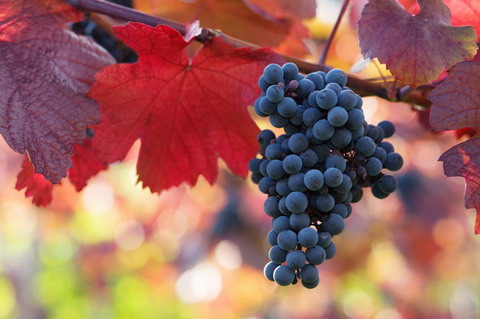What’s the big deal about sulfites in wine?
Most wine labels bear the warning “contains sulfites” (or sulphites, the Canadian and British spelling), which can alarm consumers into thinking that the substance is harmful or unhealthy.
In fact, sulfites, the salts of sulfurous acid or sulfur dioxide (SO2), are just a common food preservative that prevents the wine from oxidizing after fermentation (it turns brown and the fruit aromas go stale) or spoiling from bacteria once bottled.
Traditionally, in Europe no warning label was required if there was less than 100 parts per million of sulfites added, since they were considered a traditional and safe additive there. However, that has since changed.
Most experts recommend drinking sulfite-free wines only at the winery since these wines are believed not to keep or travel well. The jury is also still out on this point, and the science pending.
What preserves wine?
Even for fortified and red wines without the organic label, most have fewer sulfites added to them than do white wines, yet they last longer. This is because they have natural preservatives such as tannin, colour pigments, acidity, alcohol, and in the case of the fortified wines, sugar.
So perhaps the preservative benefit is over-stated, and more should be attributed to these compounds as well as to the grape’s composition and degree of indirect light exposure while on the vine (good for developing those anti-oxidant preservatives), the degree of oxygen exposure during bottling and the type of closure used on the bottle.
According to the U.S. Alcohol and Tobacco Trade and Tax Bureau (TTB), wines can only be labeled as “organic wine” if the wine has 10 ppm or less of SO2, whether it’s natural or added, when tested in federally accredited labs to keep the designation.
This is considered showing sulfur at the non-detectable range, which in turn enables organic wine producers to label wines as “sulfite-free.”
What’s more important to remember, however, is that even wines labelled as having “no sulfites added,” still have a small amount since sulfites are a natural byproduct of fermentation.
Wine isn’t the only sulfur-bearing consumable
Sulfur exists naturally in grapes, potatoes, broccoli, garlic, onions, fruit juices, dried fruits, jams, baked goods, salad bars and bottled mineral water. You can’t escape it.
Despite the furor over sulfites in wine, a single serving of most of these foods has more sulfites than a whole bottle. There are more sulfites in one glass of orange juice than in an entire bottle of wine that’s not even labeled organic.
Sulfites are harmless to most people; their danger is to asthmatics, about 5 percent of whom are allergic or extremely sensitive to them.
The only time when sulfites are intrusive for most drinkers is when incompetent winemakers use too much, which masks the wine’s flavors and gives it an acrid smell, like a lit match.
Despite some sticklers who believe that organic wine should contain absolutely no sulfites, the more moderate and common opinion is that their use should not exceed between 10 and 100 parts per million (ppm)—just enough to stabilize the wine and to keep barrels and bottles free of microbes. Today, modern techniques and winery hygiene mean that fewer sulfites are required.
Federal law in Canada and the U.S. allows all wine to have up to 350 ppm of sulfites. However, wine that’s labeled as being made from organically grown grapes must limit the amount to just 90 ppm for red wines, and 100 ppm for white and sparkling wines. Many of these wines contain no more than 40 ppm.
This is Part 2 of a five-part report on organic wine:
Part 1: What is organic wine?
Part 2: The headache over wine and sulfites.
Part 3: Is organic wine healthier for you?
Part 4: Differences between organic, biodynamic and sustainable farming?
Part 5: How to buy the best organic wines?








